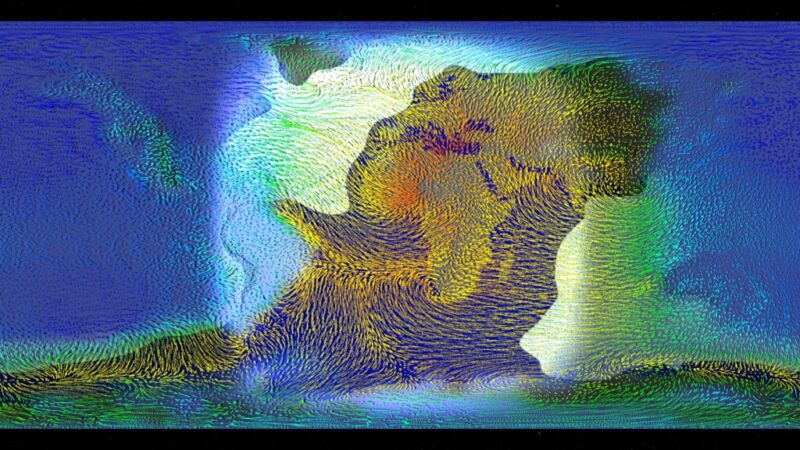Climate models go out of this world

Enlarge / One way to look at these simulations is to imagine Earth-like continents on Proxima Centauri b. The alternative is to imagine Earth being dropped next to a red dwarf star. (credit: NASA)
We've discovered plenty of planets in the habitable zone of other stars, but are any of them actually habitable? Despite the seemingly definitive terminology, "habitable zone" is simply defined as the amount of energy incoming from a planet's star. How that energy interacts with the planet's surface and atmosphere to set a temperature requires us to understand the planet's composition, as well as the details of the light produced by a star.
Fortunately, we've built tools that can tell us how radiation, an atmosphere, and a planet's surface interact. They're called climate models. Unfortunately, most climate models have hardcoded Earth-like conditions, which make them useless for studying other planets. But a little while back, NASA researchers adapted one of the agency's climate models to work with conditions at Proxima Centauri b, a planet orbiting our Sun's nearest neighbor. Now, they've released a set of animations showing how slight changes in our assumptions about the planet can radically change the conditions at its surface.
This isn't the EarthClimate models generate their output based on the physics of the atmosphere and its interaction with the energy provided by our Sun. But they do have a lot of assumptions built into them. For example, the amount of radiation sent our way by the Sun only changes within pretty narrow limits, and it comes in a fairly well-defined range of wavelengths. The composition of the atmosphere, with the exception of some greenhouse gases, isn't changing much. Land and ocean areas don't change over timescales that are relevant to the ones the models are examining.
Read 14 remaining paragraphs | Comments